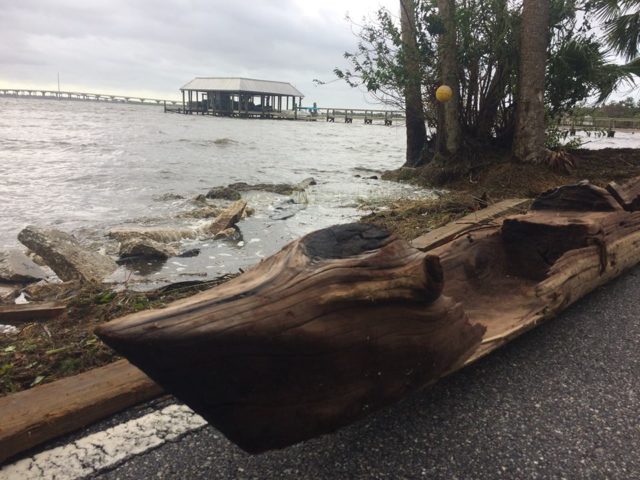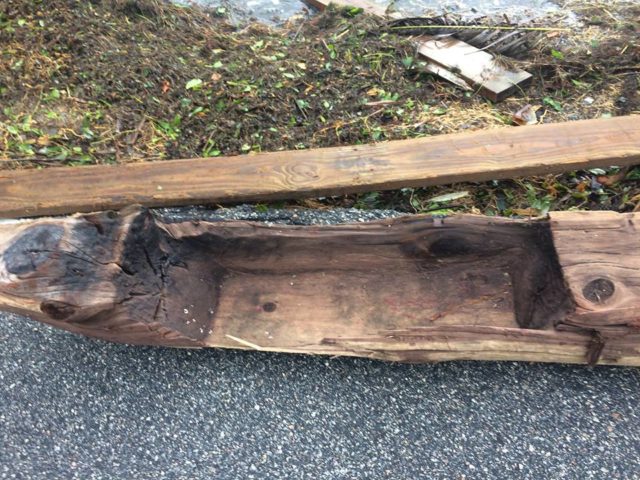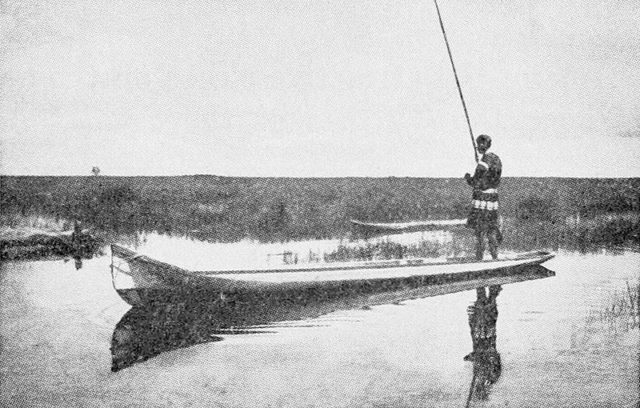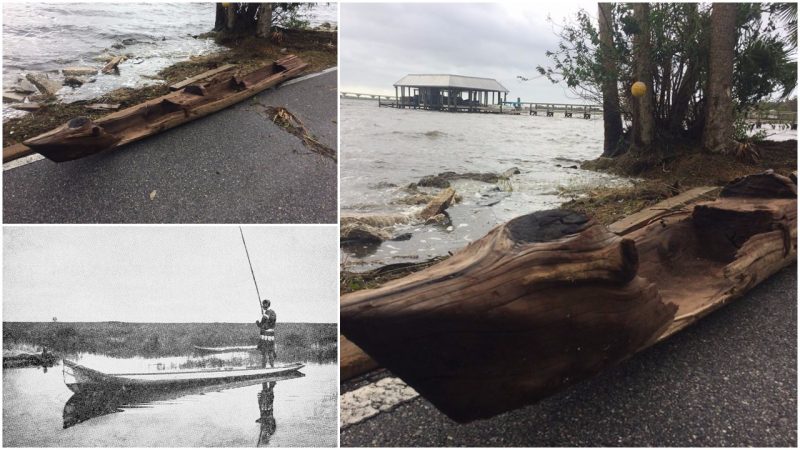The hurricanes that this season are wreaking havoc on the Caribbean and the southern United States have also brought forth an exciting artifact from Florida’s past, a 15-foot-long wooden canoe that could be 300 years old or even older.
The morning after Category 5 Hurricane Irma moved away, photographer Randy “Shots” Lathrop took a bike ride to survey the damage. He spotted something unusual washed up from the Indian River, north of Cocoa. The region is dubbed “the Space Coast” because of its being near the Kennedy Space Center and Cape Canaveral Air Force Station.
What Lathrop found was not a piece of wooden debris sprawled next to the water but a dugout canoe. “As soon as I saw it, I knew exactly what it was,” he told reporters. The canoe was presumably made by hollowing out a tree trunk, most likely a cypress. He also spotted square iron nails in the wood.

Lathrop texted a friend specializing in underwater archaeology who confirmed his theory and rushed to the scene with a truck. “It made perfect sense that it would end up here,” Lathrop said. “Any time we have any kind of storm, certain parts of our coastline are just swarming with people with metal detectors because they understand that items wash ashore after hurricanes.”

The challenge facing the two men was what to do in the short term. They contacted the state authorities but also feared leaving the canoe on the riverbank because it might be mistaken for debris and carted off or destroyed. There was machinery in the area, clearing the roads.
They decided to lift the canoe onto the truck and secure it, which proved to be very difficult. The boat weighed about 700 pounds. “It’s been water logged for years.”

An official from Florida’s Bureau of Archaeological Resources in the Division of Historical Research came to Lathrop’s home, where they were storing the canoe, and took initial tests that confirmed a theory of substantial age. But it could not be older than the time when settlers came to Florida because of the nail. It’s possible the canoe was constructed as long ago as the 17th century.
The canoe is being stored in an undisclosed location, submerged in a protective water bath to prevent deterioration.

“Initial assessments suggest the canoe is over 50 years old, which makes it historic in age, but the approximate age of the canoe is not yet confirmed,” the division said in a statement. “Overall, its appearance and the presence of a cut nail suggests it is not a precontact canoe. In other words, it is maximum several hundred years old and minimum several decades old.”
While experts perform radio-carbon dating, scholars and representatives from Native American tribes contacted the division to learn more about the canoe. The Indian River is a part of the Sovereign Submerged Lands, meaning all objects of historical or archaeological value abandoned on state-owned lands are owned by the state, officials said.

The Seminoles were particularly known for hollowing out Cypress trees to create canoes, some of them 30 feet long. Poles would be used instead of paddles in swampy areas.
Canoes built by Native Americans, Europeans, and American settlers have been discovered at over 200 sites in Florida.
After they are discovered, researchers find that the dugout canoes can range from an age of 300 years to more than 6,000 years, according to the Florida Museum of Natural History in Gainesville.
Sometimes these finds are made after a hurricane. But most of the time they are discovered during a drought, because the riverbeds are exposed. During a drought 17 years ago, 101 dugout canoes were found at a lake near Gainesville, making it the world’s largest collection of prehistoric canoes.

A discovery of a boat of a much more recent construction was also made on the Space Coast in Brevard Country, when a jogger spotted a wrecked sailboat washed ashore at Spessard Holland South Beach Park. Media reports say that the boat has a 45-foot fiberglass hull and was built in 1974. Its owner, a Key West resident, is currently in jail.
Intriguingly, two mannequins were found aboard the sailboat.
“The mannequins survived it too,” a local charter pilot said in an interview with USA Today. “So to me, that’s incredible that they survived the journey from Key West in a Category 5 hurricane.”
